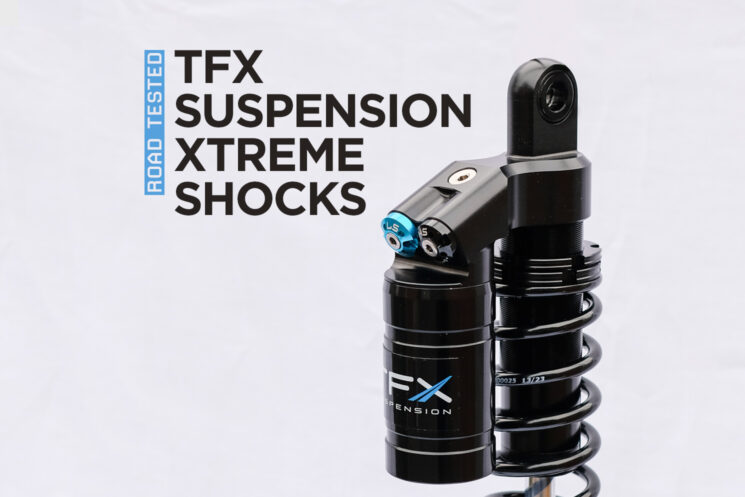
I got lucky when I bought my 2012-model Triumph Bonneville SE last year. A single-owner bike with less than 1,500 miles on the dial, it had spent most of its life trickle-charging in a garage. What’s more, the previous owner had thrown a handful of tasteful factory accessories at it (and a few that were less well-judged).
There was one key ingredient missing though; good suspension. Most modern classics roll out of the factory with suspension components that are adequate at best, but the older air-cooled Bonneville’s setup is downright poor. Small LED turn signals and a fancy sprocket cover might make your bike look prettier, but new shocks—like the fully adjustable TFX Suspension Xtreme units now gracing the tail end of my Triumph—will make it ride better.
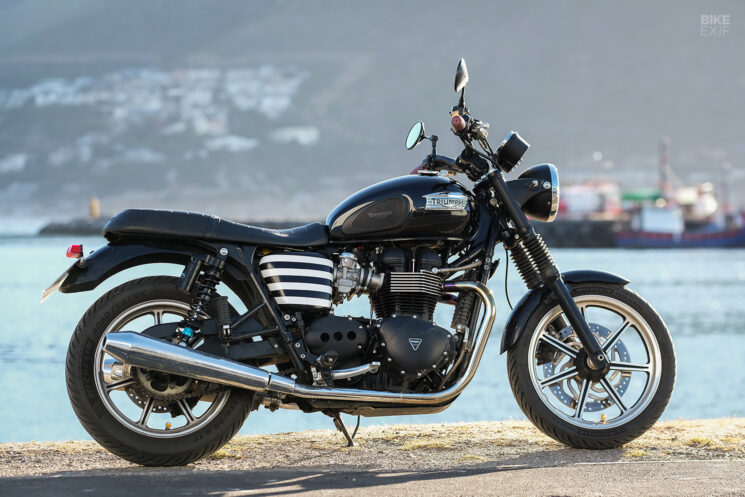
Based in The Netherlands, TFX Suspension is run by a small and passionate team, led by founders Hans-Dieter Fischer and Alex Meijs. The two of them formed TFX fourteen years ago when the suspension company that they were working for folded. Now they produce components on their terms, with the sort of hands-on approach that’s often missing from larger companies.
Their catalog includes various mono- and twin-shock items, suitable for a wide range of on- and off-road applications, plus a handful of front suspension upgrades. (We’ve seen their parts on custom bikes from Bottpower, Powerbrick, CNCPT Moto, and more.) They sent me a set of their Xtreme shocks to test out on my Triumph Bonneville; fully-adjustable units that retail for €1,399 [$1516].
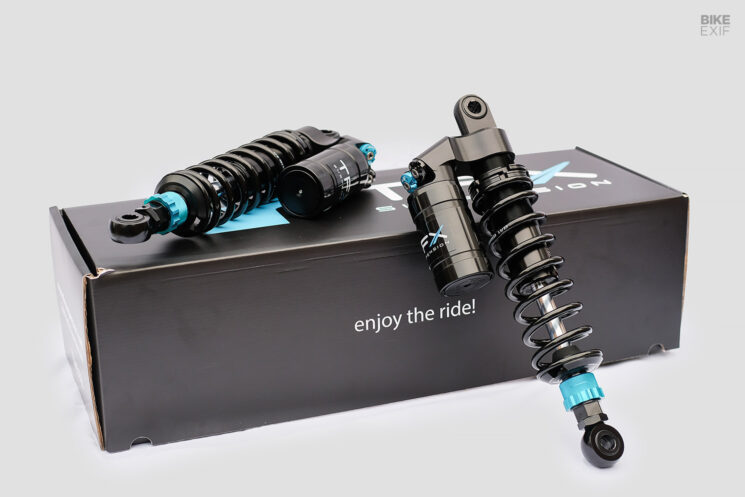
Full disclosure As is the norm with our riding gear reviews, TFX Suspension sent these shocks free of charge. They haven’t paid us for this review, nor do they expect me to only say wonderful things about their product. As always, our opinions are unbiased and our own.
The TFX Xtreme shocks feature an oversized 16 mm shaft, and a 46 mm high-flow piston with a low-friction seal. The shock body is made of 6082 aluminum, with the entire top section (including the mounting eye and the connection to the remote reservoir) machined from a solid block of 7075 aluminum. They are stunning in the flesh, featuring mostly black anodized finishes that are punctuated only by heavy-duty TFX decals and a couple of blue anodized parts. And if blue isn’t your color, TFX can customize these bits to suit your bike’s palette (for an additional fee).
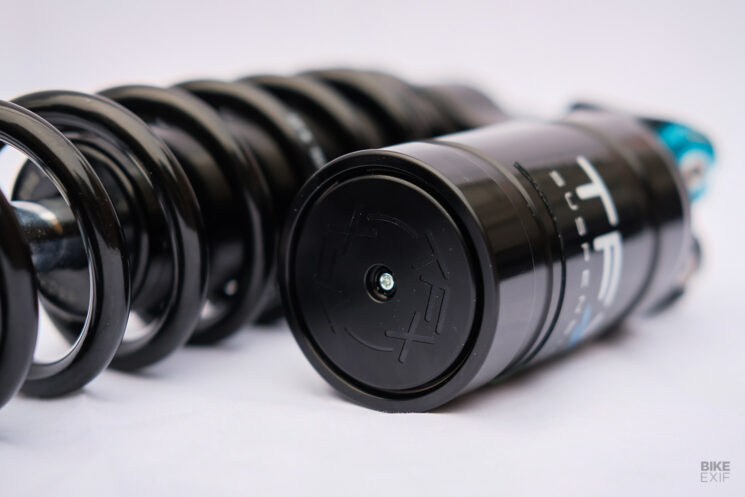
TFX uses a modular construction for their shocks, enabling them to assemble each unit by hand while tailoring it to their customer’s needs (and making each unit fully serviceable). Before Hans-Dieter built and sent my shocks, he quizzed me on everything from the make and model of my motorcycle to my weight and riding style. He then built the shocks accordingly, with springs suited to my weight and custom valving.
The Bonneville SE is hampered by rear shocks that are shorter than those on other Bonneville models from the same era, resulting in handling that’s best described as lazy. Hans-Dieter honored my request for shocks that were an inch or so longer than stock. Then he made me measure the shock mount diameter on my bike, to make sure that he would send me the right size bushings.
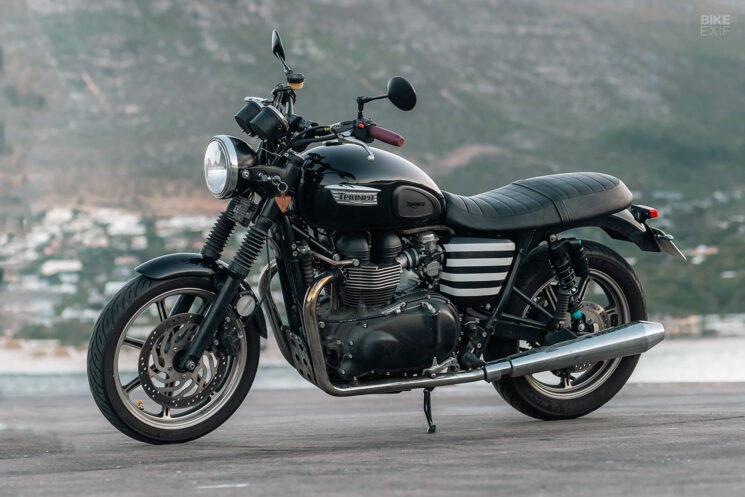
Installing new rear shocks is a fairly simple procedure, but without a lift, a torque wrench, or sufficient space in my home garage, I had my friends at Triumph Cape Town bolt the TFX units to my Bonneville, rather than doing it myself. (Dean is likely very ashamed of me right now.)
There was only one hiccup during installation; the supplied bushings were marginally too tight. It could have been that the powder coating on the bushings was a little thick, or that the factory tolerances were off. Either way, a few minutes of light filing solved the problem.

The difference between the OEM and TFX shocks was tangible from the first ride; borderline ridiculous, even. Granted, the stock Bonneville shocks don’t set too much of a benchmark, and the slight geometry tweak from the longer TFX shocks will go a long way to improving the ride. But that doesn’t take away from the fact that the ride quality offered by the TFX units is exponentially better than before.
It’s not just the length, spring rate, and valving that’s custom. The TFX team also set up the shocks according to my preferences before boxing them—and then recorded those settings in the manual. The Xtremes feature adjustable preload, rebound, and low- and high-speed compression adjustment, and each one of those was tweaked according to the information I had sent.
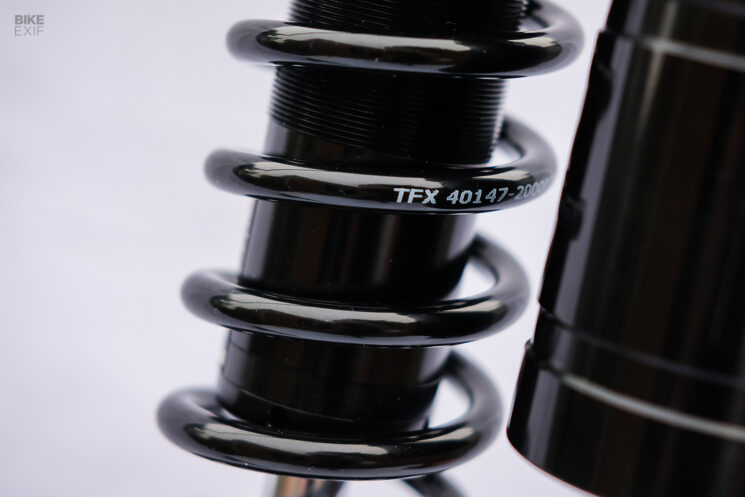
Suspension adjustment can seem like a dark art if you’ve never done it, but it needn’t be. The TFX manual is extremely helpful, outlining what each setting does, how to adjust it, and how to troubleshoot a variety of unwanted ride characteristics. Not only are the shipped settings recorded here by the engineer who built each shock, but there’s a section set aside for you to record your own tweaks and note the results.
Rebound is adjusted by turning the blue hand wheel at the bottom of each shock, while low- and high-speed compression are each tuned with an Allen key at the top of the shock. Adjusting preload takes a little more work; you need to use the included C spanner to disengage the locking ring, and then set the preload according to your preference.
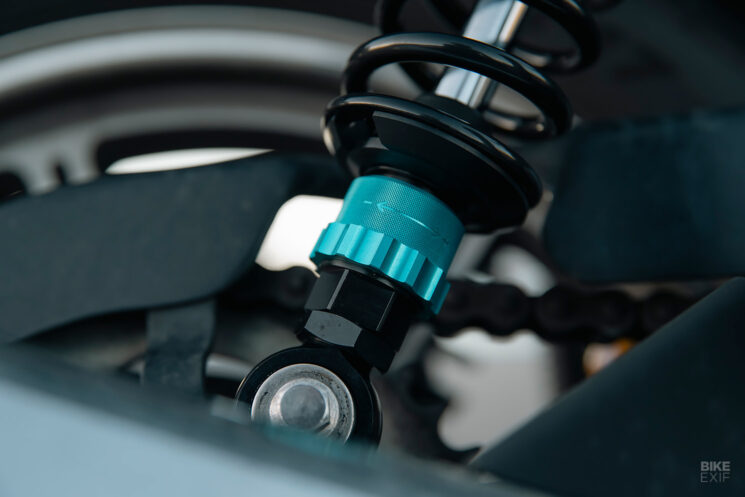
Some of TFX’s shocks ship with a remote hand-wheel preload adjuster, and some can be fitted with an add-on preload adjustment hand-wheel. The shocks on my bike also have a limited range of height adjustment, although I opted to leave that setting alone. If you’re on a budget, the brand’s more entry-level Traveler model ditches the remote reservoir, and pares the adjustments down to just preload and rebound.
Having two hand-wheel preload adjusters on a neo-retro bike with twin shocks just isn’t viable, but using the C spanner to set preload is hardly a chore, so it’s a non-issue. The rebound adjustment hand wheel is dead easy to dial in—there’s a laser-engraved graphic on it that shows you which way is more or less, and each level of adjustment is marked by a tangible click.
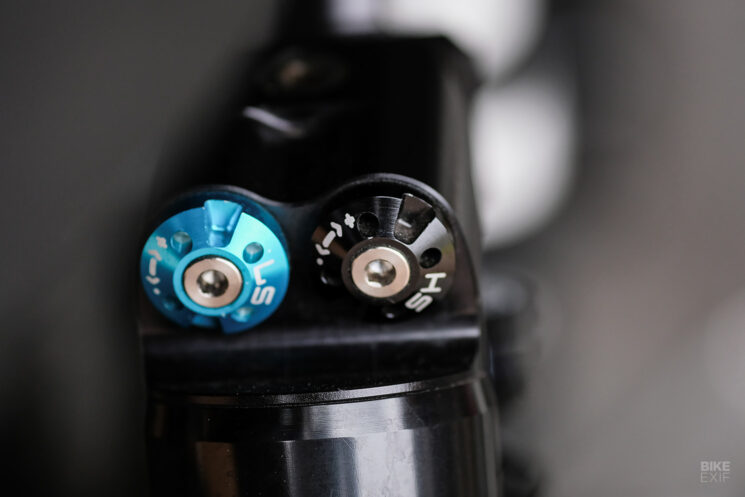
The compression knobs, on the other hand, don’t click into place as much as they cycle through what feels like notches. These adjustment stops are noticeably less solid-feeling than the rebound adjuster’s, so you need to pay attention to feel them out.
For all of the options available to me, I found myself falling back onto the settings that TFX had calculated for me. Most people don’t realize how much the older Bonneville SE can hustle when it’s set up right, and the base settings of my new shocks ended up being the biggest piece of that puzzle. The baseline settings had the bike feeling firm and planted, and while I could still feel shittier road bumps beneath my wheels, the bike would recompose itself quickly and smoothly.
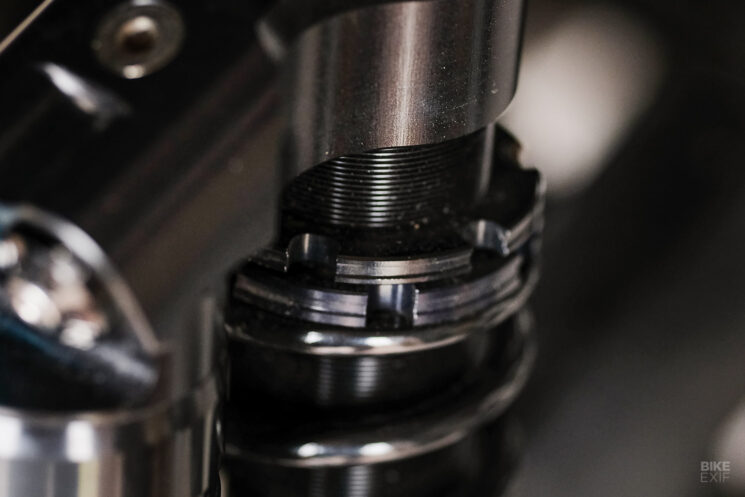
I fiddled around, accidentally over-cooking the rebound and low-speed compression settings to the point that the bike felt jittery, then dialing them back too far. I ping-ponged back and forth for a bit, recording each setting and the consequent ride feel, before finding myself back at the baseline again. With a couple of extra clicks of rebound damping from there, the Bonneville was exactly where I wanted it; responsive, a little stiff but not harsh, and planted in corners.
There’s also the benefit of having a pair of shocks sprung specifically for my (not unsubstantial) heft. The rear fender of my Bonneville SE now floats above my back wheel, rather than hovering millimeters away from my rear tire.

Although I promised myself (and my significant other) that I wouldn’t turn my Bonneville into a project bike, the opportunity to upgrade its rear shocks was a no-brainer. It feels like a new motorcycle—which is not only a testament to TFX’s product, but also a strong argument for the benefits of upgrading your running gear before you fuss with making your bike look pretty.
All I need to do now is upgrade the front suspension to match.
TFX Suspension | Facebook | Instagram | Images by Wes Reyneke and Devin Paisley

from Bike EXIF https://ift.tt/IHN9rZu
No comments:
Post a Comment